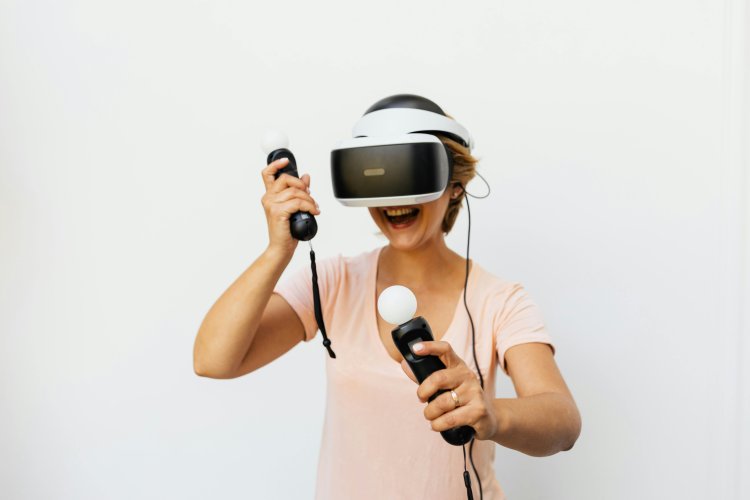what is Virtual Reality technology
Virtual reality (VR) technology immerses users in a simulated environment often through a combination of visual auditory and sometimes tactile sensations.
what is Virtual Reality technology
Virtual Reality technology
Virtual reality (VR) technology immerses users in a simulated environment often through a combination of visual auditory and sometimes tactile sensations. Here's an overview
1. Hardware VR systems - Hardware VR systems typically consist of a head-mounted display (HMD) that covers the user's eyes and ears, blocking out the real world and replacing it with a virtual world. These displays can range from basic smartphone-powered devices to high-end headsets with integrated displays and sensors.
2. Tracking System - Tracking System To track the user's activities and adjust the virtual environment accordingly VR systems use various tracking technologies. These may include external sensors placed in the environment cameras or internal sensors within the HMD.
3. Input devices - Input devices Users interact with virtual environments using specialized input devices such as handheld controllers, gloves with motion sensors or even full-body motion capture systems. These tools enable users to manipulate objects navigate the environment and interactVirtual character or element.
4. Software and Content VR - Software and Content VR experiences can range from simple games and simulations to complex training programs, educational tools and immersive storytelling experiences. Developers use specialized software development kits (SDKs) and game engines to create games.
5. Applications VR technology - Applications VR technology has applications in various industries including gaming and entertainment education and training healthcare architecture and design military and defense and others. It is used for purposes such as simulation training virtual meetings and solutions architectural visualization psychological therapy and rehabilitation
6. Challenges Despite its potential VR technology - Challenges Despite its potential VR technology still faces a number of challenges including the need for more comfortable and affordable hardware reducing motion sickness and other discomforts improving visual fidelity and reducing latency This includes expanding content libraries and addressing concerns related to privacy and security.
virtual reality technology has the potential to revolutionize the way we interact with computers and digital content providing immersive and engaging experiences that blur the line between the physical and virtual worlds.
How to explain the working of virtual technology?
Explaining how virtual reality (VR) technology works involves understanding its main components and how they interact to create immersive experiences
1. Virtual Environment Creation VR technology begins with the creation of a digital three-dimensional environment. This environment is often created using computer graphics software or captured through techniques such as 360-degree video.
2. Head-mounted displays (HMDs) Users wear a special HMD with a display for each eye which produces stereoscopic images. These displays are often high-resolution screens that refresh rapidly to reduce motion blur and latency.
3. Tracking Systems To accurately track user movements and adjust the virtual environment accordingly VR systems use tracking technology. This may include external sensors placed around the room cameras or internal sensors within the HMD. These sensors capture data about the user's position and orientation in real time.
4. Input devices Users interact with the virtual environment using input devices such as handheld controllers or gloves with motion sensors.
5. Rendering and stereoscopic imaging VR systems continuously render the virtual environment from the user's perspective taking into account the user's position and orientation. The rendered images are then displayed on the screen of the HMD creating a stereoscopic effect that simulates depth perception
6. Audio integration. Immersive audio plays an important role in enhancing the sense of presence in VR environments. Spatial audio techniques are used to simulate realistic sound scenarios in which sounds change in response to user movements and interactions
7. Real-time interaction VR experiences often involve real-time interactions with virtual environments and other users. It requires fast processing and rendering capabilities to keep it smooth and responsive
8. Content and Applications VR content can range from games and simulations to educational experiences, training programs, virtual meetings and more. Developers use specialized software tools and development kits to create optimized content for VR platforms.
9. User feedback and comfort. To ensure a comfortable and enjoyable experience VR systems need to minimize motion sickness and other discomforts. This may include techniques such as reducing latency, optimizing frame rates and providing customizable settings for users.
10. Combining these components and technology VR systems create immersive experiences that transport users into virtual worlds allowing them to explore, interact and engage in ways that were previously impossible.
What's Your Reaction?




















